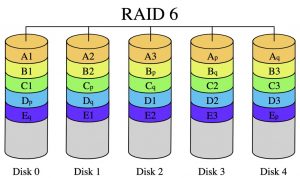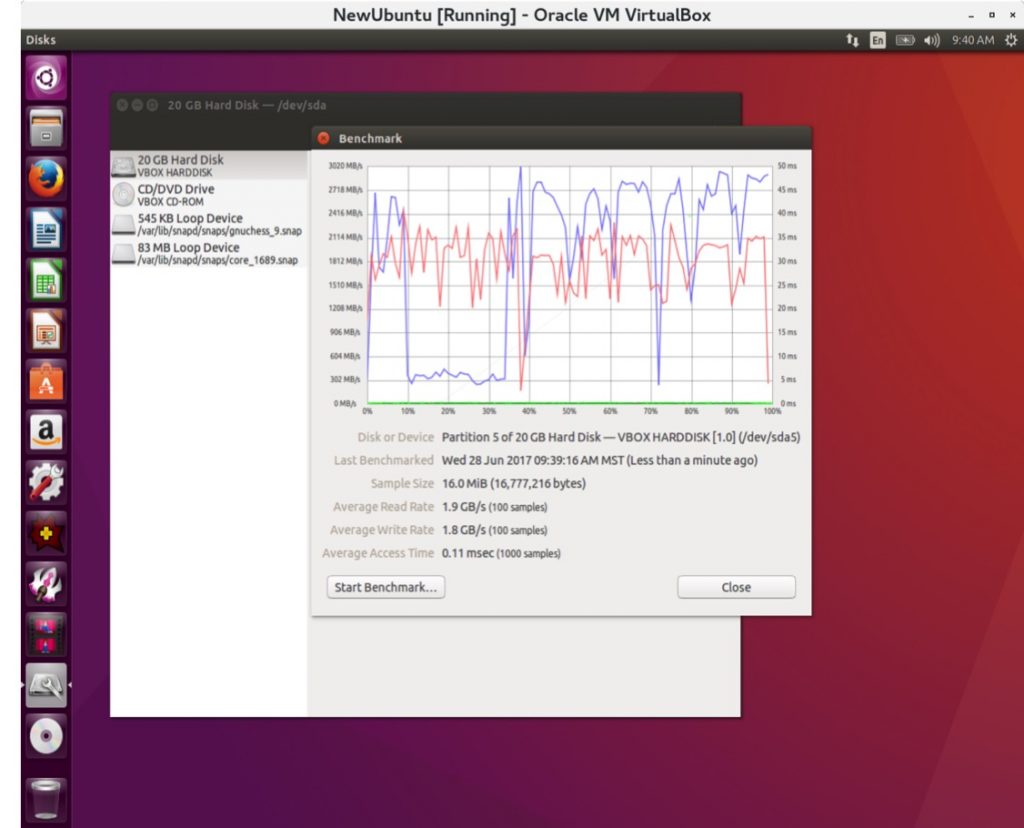After 1 to 6, New RAID Level, PentaRAID, From Start-Up Xoralgo
Supposed to better than RAID-6
By Jean Jacques Maleval | February 13, 2019 at 2:43 pmFounded in May 2018 and based in Wilington, DE, start-up Xoralgo, Inc., builds a new RAID technology after RAID-1 to -6, PentaRAID (and not RAID-7 already launched by AC&NC with triple parity ensuring rapid data recovery even if three disks fail simultaneously)
 Xoralgo’s CEO is Marek Rychlik, professor of Mathematics at University of Arizona.
Xoralgo’s CEO is Marek Rychlik, professor of Mathematics at University of Arizona.
While the cornerstone of the current RAID systems is the aging RAID-6, start-up’s RAID is based on a new algorithm utilizing five redundant disks. PentaRAID and was developed at the University of Arizona and licensed exclusively to Xoralgo.
A data loss study at CERN exposed data loss due to reasons other than an apparent disk failure. In particular, errors that RAID-6 cannot correct (dual bit errors). The CERN study have been confirmed by others.
The main limitation of RAID-6 is that it uses only two redundant disks. This makes it vulnerable to data loss. One cause of data loss is a catastrophic disk failure. Another cause of data loss gaining importance today is silent data corruption due to undetected disks errors (UDE). UDE are a product of laws of physics and do occur during ‘normal’ disk operation. In the era of huge disk drives, UDE may occur every few hours. The IT departments often refer to UDE as ‘bit flip’ as it may occur as a result of repeatedly reading a bit of data from a disk. Every 10^14 reads or so, the bit will be read incorrectly, and this error may propagate in calculations (such as calculating the total of a giant spreadsheet), rendering the entire calculation invalid.
Common RAID-6 configuration.
(Source: en:User:Cburnet, RAID-6, Converted to Inkscape 0.92, CC BY-SA 3.0)

PentaRAID configuration with 15 disks. Current implementation limit: 259 disks
Click to enlarge

The inadequacy of RAID-6 is known. The failure of one disk requires its replacement and reconstruction of the data. This process may take days or weeks for the typical multi-terabyte disks of today. The RAID operating with failed disks is said to be in degraded mode. Thus, RAID systems of today spend a significant amount of time operating in degraded mode. RAID-6 in this mode can detect UDE, but cannot correct them, thus resulting in data loss.
It is not unlikely that a second disk fails during the recovery of the first failed disk. This results in doubly degraded mode. While no data loss is imminent for a RAID-6 system operating in doubly degraded mode, in this mode RAID-6 is not capable of detecting or correcting any errors. Thus, any UDE remains undetected and uncorrected by a RAID-6 operating in doubly degrated mode.
Xoralgo scales up the RAID-6 architecture to use five parity blocks per stripe (P1-P5). This results in an improvement of error protection (estimated 20 orders of magnitude over RAID-6). PentaRAID is a flat RAID, i.e. no need to nest one RAID within another, which avoids many complexities of, say, RAID-60. The IT personnel familiar with RAID-6 could easily adopt to the new technology.
The company invented a new ECC which is used to compute the five parity blocks (P1-P5), and which has an efficient decoder. Therefore, PentaRAID has comparable efficiency to RAID-6, with better data loss protection, including UDE. Also, the code is systematic, which means that non-parity blocks contain original user data, unlike original Reed-Solomon codes.
Proof-of-concept: Ubuntu virtual machine
A PentaRAID implementation has been built to to demonstrate viability and usefulness of the technology. As an example, the firm built a VM (utilizing Oracle’s VirtualBox) with 15 virtual disks (represented by regular files) and installed the Ubuntu OS utilizing PentaRAID. Ubuntu partitioned the PentaRAID storage as usual (using the ext4 filesystem). In one of the experiments, Xorago benchmarked the swap partition of Ubuntu, observing performance slightly under 2GB/s$. This experiment was performed on a $1,600 laptop with a quadcore processor using a single SSD disk (mSATA).
The take-away is:
• Complete OSs can run on company’s RAID, utilizing native file systems (unlike NFS).
• PentaRAID provides performance (and high error protection) even on modestly priced hardware.
The start-up subjected PentaRAID to various tests, including simultaneous removal of up to 4 (or even 5) disks. It also tested for loss of data from two simultaneous random errors on randomly selected disks (errors called UDE, as most disks and RAID systems are incapable of detecting them). PentaRAID guarantees recovery from these types of errors.
Ubuntu on PentaRAID. Benchmarking of the swap partition.
Click to enlarge

The technology is protected by a provisional patent filed with USPTO on January 24, 2017 (application number: 62/449,920). Full patent application was filed on January 19, 2018 (International application number: PCT/US 18/14420): Method ans system utilizing quintuple parity to provide fault tolerance.
Abstract of the patent:
“An error correction and fault tolerance method and system for an array of disks is presented. The array comprises k + 5 disks, where k disks store user data and 5 disks store computed parity. The present invention further comprises a method and a system for reconstituting the original content of each of the k + 5 disks, when up to 5 disks have been lost, wherein the number of disks at unknown locations is E and the number of disks wherein the location of the disks is known is Z. All combinations of faulty disks wherein Z + 2 x E ≤ 4 are reconstituted. Some combinations of faulty disks wherein Z + 2 x E ≥-5 are either reconstituted, or errors are limited to a small list.“
Read also:
RAID Is 30-Year Old
Invented by David Patterson, Garth A. Gibson and Randy Katz at University of California, Berkeley in 1987
By Jean Jacques Maleval | November 20, 2017 | News














 Subscribe to our free daily newsletter
Subscribe to our free daily newsletter

